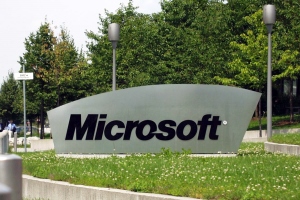Avoid this BSoD tech support scam
Tech support scammers have mocked up a web page with an even more dire version of Microsoft’s infamous Blue Screen of Death (BSoD) error page.
 The website, registered behind an anonymity service on 1 September, wants to convince surfers tricked into visiting it that their PC has been derailed in order to dupe prospective marks into phoning scammers, who will attempt to extract a big fat fee for solving non-existent problems.
The website, registered behind an anonymity service on 1 September, wants to convince surfers tricked into visiting it that their PC has been derailed in order to dupe prospective marks into phoning scammers, who will attempt to extract a big fat fee for solving non-existent problems.
While people sat looking in horror at the fake BSoD, rather nasty files were installing in the background. It was certainly inventive, but these days it’s all about the money and any attempt at elaborate shenanigans have been replaced by the quickest route to a pot of cash.
BSOD: Error 333 Registry Failure of Operating System – Host:
BLUE SCREEN ERROR 0x000000CE
Please contact Microsoft Technicians at Toll Free: [phone number]
To immediately rectify issue to prevent data loss
Victims are lured to scam pages via either spam messages or malicious advert redirects, according to Malwarebytes, the security software firm that spotted the BSoD scam page. Surfers with Javascript enabled will get nagged with a pop-up message featuring an even more dire warning until they kill the browser instance, something that might be tricky without resorting to the “CTRL+ALT+ DELETE” kill option.
Nobody answered when Malwarebytes called the phone number associated with the all-too-apparent scam. “The typical M.O. with these scams is to access your PC remotely with a program of the scammer’s choosing, but due to the no-show on the call we can’t give any more additional information at this time,” Chris Boyd, a senior malware intelligence analyst at Malwarebytes, explains in a blog post.
“In a nutshell, should you see any form of messages in your browser claiming to be a BSoD, either close the window or disable Javascript then close it – and don’t call the number. If the various browser pop-ups make it impossible to access your Browser options for whatever reason (or you’re just not sure how to disable it), then hit CTRL+ALT+DEL and close it from the Task Manager.”
Miscreants have been known to take a prank Blue Screen of Death screensaver created by a security researcher before bundlng it with malware and unleashing it on the web. The ruse – pulled off in 2008 – was designed to distract victims while malware installed in the background.
More recently cut and paste fake Blue Screen of Death websites have cropped up in the context of tech support scams. The tactic is rare but not unprecedented, as Boyd notes in writing about the latest manifestation of the tactic. A write-up of a previous example spotted by Malwarebytes in July can be found here.
Boyd told El Reg: "Potential victims usually reach these sites via spam on tech help portals, Yahoo answers and advert redirects. Once they've seen the fake error warnings panic normally sets in and they start dialling whatever number is put in front of them.” "Sometimes tech support scammers have no out-of-hours routing in place which means potential loss of earnings, though they may attempt to get around this by using premium rate numbers. This means the mark is still going to lose money even without some phoney tech support taking place,” he added.
Axarhöfði 14,
110 Reykjavik, Iceland














